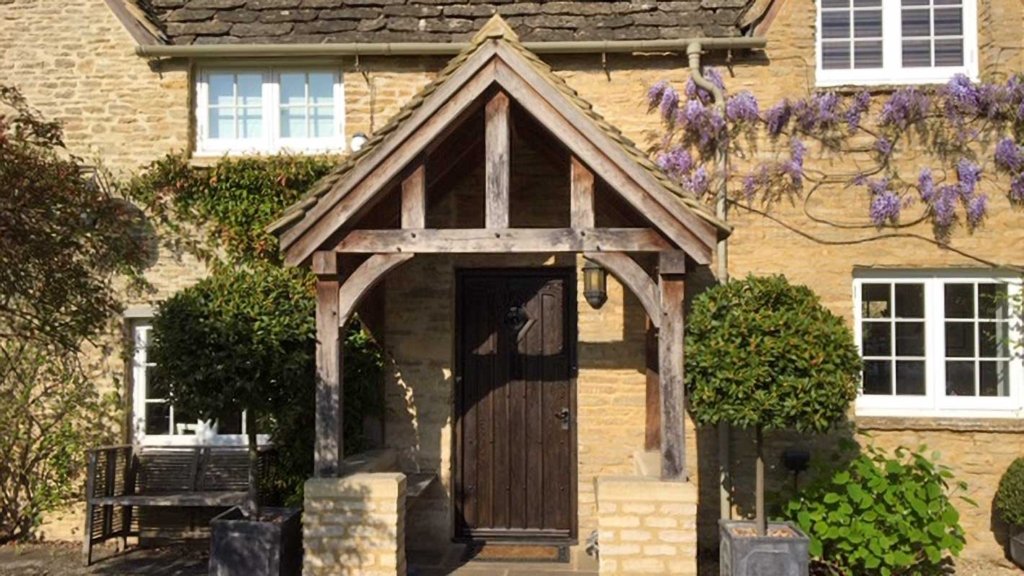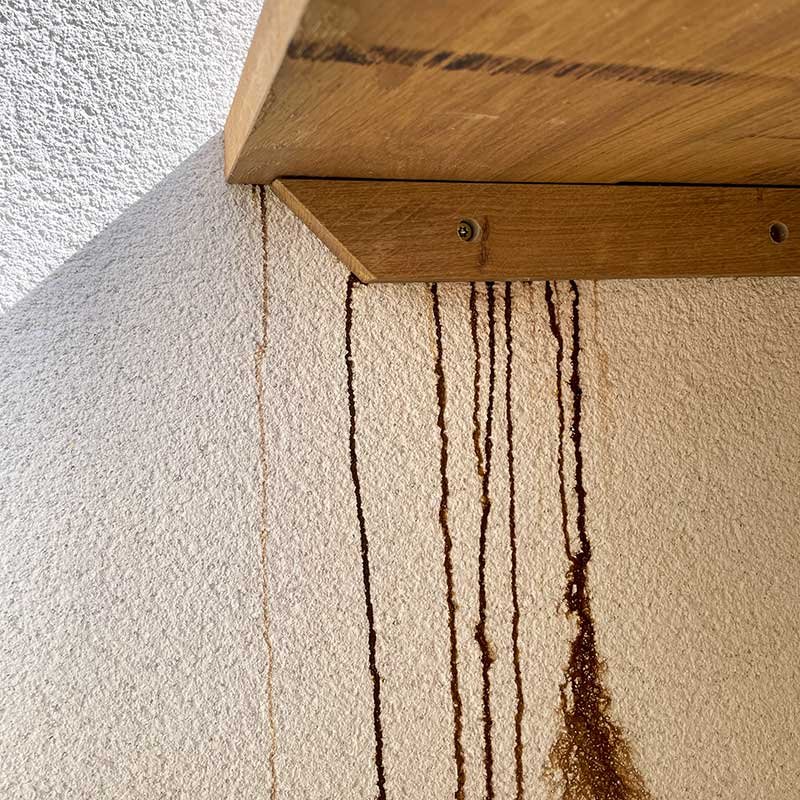
oakbydesign
01423 593 794



In oak buildings, tannins are a natural compound which permeate oak’s structure, acting as a preservative that wards off decay, insect infestation, and moisture-induced damage.
By creating a robust barrier, tannins enhance the wood’s durability and longevity. Additionally, they give oak a rich, dark hue, adding a characteristic depth that makes it a timeless choice in construction.
But how exactly do these compounds influence the form and function in oak structures?
Tannins play a significant role in enhancing the wood’s durability and resistance to environmental stressors. These compounds act as natural preservatives, inhibiting microbial growth and protecting the wood from decay.
Tannins also contribute to oak’s resistance to insect infestation by creating an inhospitable environment for pests. Beyond their protective qualities, tannins create a rich, dark hue to the wood, elevating its visual appeal.
The interaction between tannins and environmental elements, such as moisture, further fortifies oak, ensuring its longevity. This multifaceted role of tannins not only enhances oak’s functional attributes but also its aesthetic qualities, making it an ideal material for both structural and decorative applications in buildings.
Given oak’s high tannin content, this naturally occurring compound greatly bolsters the wood’s durability by acting as a preservative, protecting against decay and insect damage. Tannins create a hostile environment for fungi and wood-boring insects, greatly extending the lifespan of oak structures. This polyphenolic substance permeates cellular walls, enhancing the structural integrity of the wood.
Oak’s aesthetic appeal is also elevated by tannins. The combination of functional and visual enhancements makes oak an ideal material for durable, long-lasting buildings. The integration of tannins into oak’s cellular architecture offers a sophisticated blend of preservation and beauty, ensuring the wood’s resilience over time.
Oak’s innate resilience to environmental factors stems from its high tannin content, which acts as a natural barrier against moisture, decay, and insect infestation.
This compound creates a protective layer within the wood fibres, greatly reducing water absorption and subsequent swelling or cracking. The tannins’ antimicrobial properties inhibit fungal growth, thereby preventing rot.
The dense grain structure of oak, combined with its tannin-rich composition, guarantees minimal warping and enhanced durability under varying climatic conditions.
As a result, oak’s tannin content not only strengthens the wood against environmental stressors but also extends the lifespan of oak buildings, ensuring they remain robust and dependable over time.
The rich hue transmitted by tannin enhances the visual allure of oak, making it a sought-after material for aesthetically appealing outdoor furniture.
Tannin’s ability to deepen oak’s colour brings out the intricate grain patterns, creating a timeless and elegant look. This visual richness is complemented by the wood’s natural lustre, which can be further enhanced through finishing techniques like oiling or varnishing.
Additionally, tannin contributes to the wood’s ability to develop a distinguished silver patina over time, adding character and depth. These aesthetic benefits make oak not only a practical choice for outdoor use but also a visually compelling one, blending durability with sophisticated design elements that elevate any outdoor space.
Crafting oak buildings and oak structures demands meticulous construction techniques to harness the wood’s full potential for durability and aesthetic appeal. Planing is crucial, reducing warping and twisting while enhancing the straight grain pattern. This method guarantees both structural integrity and visual allure.
Mortise and tenon joints, secured with dowels or screws, are essential for robust connections, offering exceptional load-bearing capacity and resistance to wood movement. These joints are carefully aligned to maintain stability over time.
Additionally, techniques like proper seasoning and ammonia fuming minimise tannin leaching, preserving the wood’s beauty and resistance to decay. These construction techniques collectively ensure that oak structures remains both beautiful and functional, even under harsh outdoor conditions.


To remove existing black stains from oak, start by replacing any ferrous fixings to halt further discolouration. Next, prepare an oxalic acid solution by following the manufacturer’s instructions.
Wear protective gear, including goggles, a mask, and gloves. Apply the solution with a paintbrush, working along the wood’s grain. Allow it to soak in and dry completely. If the stain persists, reapply the solution until the discoloration fades.
Once the stains are removed, rinse off any remaining acid residue with clean water. Let the oak dry thoroughly before considering further treatments.
This method effectively restores the oak’s natural beauty by eliminating unsightly black stains caused by tannic acid reactions with ferrous materials.
Where the staining is on the stone or brickwork, the best course of action would be to use either sugar soap or brick acid to remove them, again using protective equipment.
For effective prevention of black staining in oak, one must prioritise using non-ferrous fixings and appropriate ironmongery finishes from the beginning.
Stainless steel and brass screws or nails are essential to avoid reactions with tannic acid. When selecting ironmongery, finishes like premium black or ‘black on galv’ guarantee compatibility with oak.
Regular inspection and maintenance of fixings and ironmongery help catch early signs of corrosion. Additionally, recoating oak with UV-resistant oil like Osmo’s Exterior UV Oil provides added protection.
Ensuring the timber is properly dried before treatment maximises the effectiveness of these preventive measures. By taking these steps, one can significantly decrease the risk of black staining in oak, preserving its natural beauty.
Telephone: 01423 593 794
Locksley Park
Blind Lane
Tockwith
YORK YO26 7QJ
Opening Times:
Mon to Fri - 9.00am to 5.00pm
Bank Holidays - Closed
Christmas 2025- TBC
Oak By Design is the trading name of:
Oak By Design Ltd.
Reg Number: 04384416
VAT Number: 664 8012 33